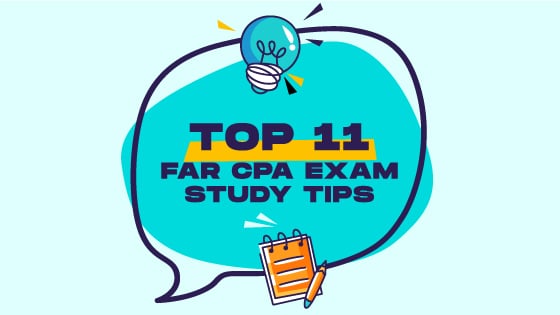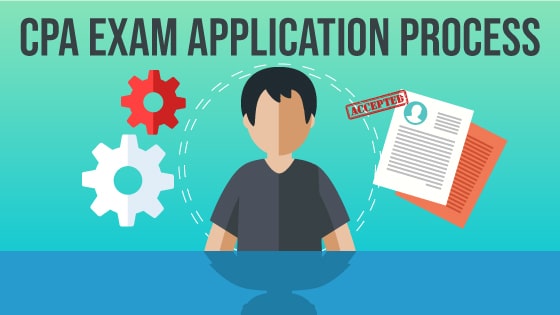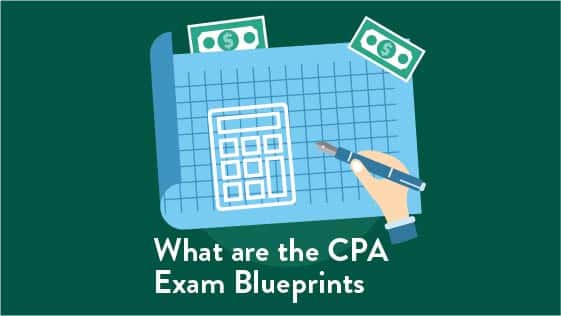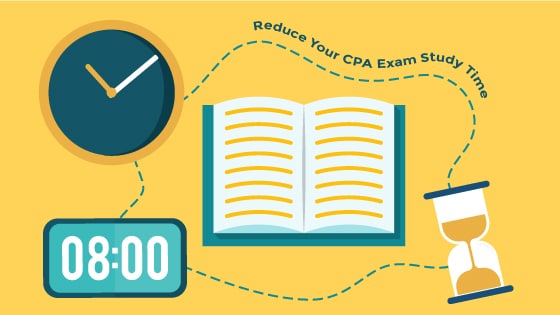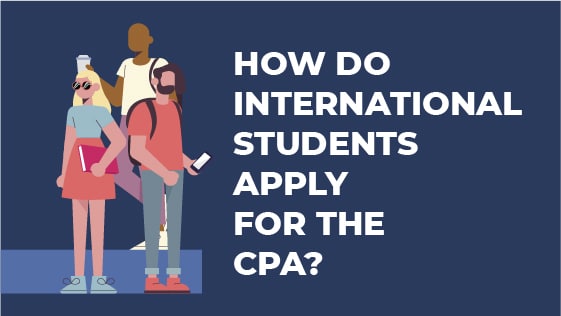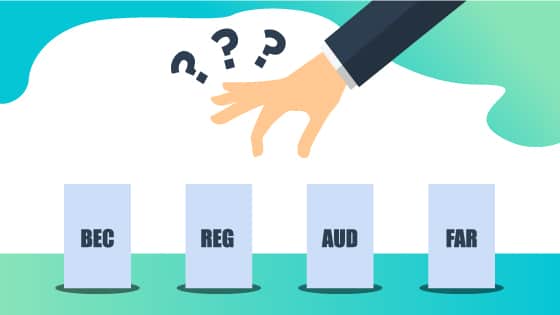The FAR CPA Exam section is the “number-crunching” part, and many students struggle with the number of calculations required on this test. In order to move through the test materials as quickly as possible, you need to understand some key concepts. Use these tips to understand the most important FAR topics and pass this section of the CPA exam on your first try!
See the Top CPA Review Courses
- Becker CPA Review Course ◄◄ Our Highest Rated +
- Surgent CPA Prep Course ◄◄ Best Technology
- Roger CPA Review Courses ◄◄ Best for Engaging Video Lectures
- Gleim CPA Review Courses ◄◄ Unlimited Course Access
Accrual Basis Accounting
Every FAR test covers the accrual basis method of accounting, which is required by Generally Accepted Accounting Principles (GAAP), and this method instructs accountants to use the matching principle. CPAs must match the revenue generated with the expenses incurred to produce the revenue, regardless of the timing of cash inflow and outflows.
Now:
Some exam candidates have trouble with the adjusting entries that are required by the accrual method. To keep things straight in your mind, remember that an adjusting entry involves one balance sheet account and one income statement account.
Assume, for example, that you owe $5,000 in wages on December 31st, and that you will process payroll on January 5th of the following year. Accrual accounting requires you to post an entry for the wage expense before the end of the year, so you record this adjusting entry:
December 31st
Debit wage expense $5,000
Credit accrued wages payable $5,000
(To record wages owed to employees on December 31st)
Here’s the entry recorded when payroll is processed:
January 5th
Debit accrued wages payable $5,000
Credit cash $5,000
(To pay wages owed on December 31st)
Accrual accounting matches the revenue produced in December with the wage expense incurred in December.
Bond Premiums and Discounts
Accounting for bonds is often poorly explained, particularly if the instructor does not have experience in the financial services industry. Financial professionals have to explain bond premiums and discounts to customers, and answer questions if the explanation is not clear.
Here’s the deal:
For starters, bonds are typically issued at a face amount (par amount) of $1,000, or a multiple of $1,000. Since bonds are traded on exchanges, bonds can be bought or sold at different prices. If a bond is purchased at $1,100, the purchase price is a premium (more than par), and a bond purchased at $980 (less than par) is a discount price.
The bond purchased at $1,100 has a $100 premium, and the premium is an additional cost that is reclassified into bond expense over the remaining life of the bond. If the bond matures in 10 years, for example, the annual expense may be ($100 premium / 10 years), or $10 a year.
On the other hand, the bond purchased at $980 has a $20 discount, and the discount is additional income that is reclassified into bond income over the remaining life of the bond. If the bond matures in 10 years, the annual income may be ($20 premium / 10 years), or $2 a year.
A bond premium creates more expense for the buyer, while a discount creates more income for the buyer.
Related Blog Posts & Resources
- Deep Dive: Top 35 CPA Exam Statistics [Infographic]
- Top 11 Audit CPA Exam Tips
- Reduce Your CPA Exam Study Time by 116 Hours
- Which Section of the CPA Exam Should I Take First?
Capital Lease
An operating lease means that no asset is created when the owner enters into the lease agreement. If a business owner leases a car for $400 a month, the lease payments are immediately expensed as incurred.
A capital lease requires the owner to post an asset for the leased item. Using the same $400 car lease, the owner would set up a lease liability account for the required payments and post the leased vehicle as an asset. If any one of these four criteria is true, the lease is treated as a capital lease:
- Ownership: The lease transfers ownership of the asset to the lessee (the business leasing the asset) at the end of the lease term.
- Bargain purchase option: The lease contains a purchase option that allows the lessee to purchase the leased asset at the price that is less than fair market value.
- Lease term: The term of the lease is greater than 75 percent of the asset’s useful life.
- Present value of payments: The present value of the minimum lease payments is greater than 90 percent of the fair market value of the leased asset.
Keep these rules in mind as you study for the FAR CPA exam section.
Consolidations
Consolidated financial statements are difficult for exam candidates, because the topic is so complex. Creating a set of consolidated financial statements may require dozens of accounting entries, and it may be difficult for you to understand the process.
But here’s the kicker:
You can answer consolidation questions if you understand these key points:
- “What if” financial statements: Both the parent company and each subsidiary maintain a separate set of financial statements. The consolidation presents the combined financial statements as if all the entities are one combined company, but each business operates separately.
- Intercompany transactions: A parent company may have financial transactions with subsidiaries, but the financial impact of those transactions is eliminated in consolidation. Consolidated financial statements only present transactions that are with third party customers and vendors. If a subsidiary sells inventory to the parent for a $5,000 profit, the subsidiary’s profit is eliminated in consolidation.
These points should help you understand the consolidation process.
Depreciation Methods

- Total depreciation: The total dollar amount of depreciation is the same, regardless of the depreciation method chosen. If you purchase a $30,000 truck, for example, and assume that the salvage value of the truck is $0, total depreciation expense will be $30,000, regardless of what method you choose.
- Timing: The differences in depreciation methods relate to the timing of the expense. An accelerated method, such as double declining balance (DDB), will post more depreciation expense in the early years and less in later years, while the straight-line method records the same amount of expense each year.
- Net income: The depreciation method selected will impact net income. An accelerated method will post more depreciation expense in the early years and less net income, and net income will be higher in later years as depreciation expense is reduced.
Want to know the best part?
Since total depreciation is the same using each method, you can check your expense calculations to verify that the asset has been fully depreciated.
Use these tips to check your answers and confirm your understanding of depreciation methods.
Diluted earnings per share (EPS)
Earnings per share (EPS) is a key metric used to value a company’s common stock, and EPS is defined as (net income available to common shareholders) divided by (weighted average common stock shares outstanding). While this basic definition may be clear to you, many CPA candidates are confused by diluted EPS.
What’s the bottom line?
When something is diluted, it is spread out, and diluted EPS means that the same dollar amount of earnings is “spread” over more common stock shares. A business that generates $2.50 of EPS is less valuable than a firm producing $4 of EPS, so dilution can lower the perceived value of a company’s stock.
Diluted EPS assumes that any security that can be converted into common stock is converted. If the CEO owns stock options that can be converted into 1,000 shares of common stock, for example, diluted EPS assumes that the 1,000 additional shares are issued to the CEO.
Indirect method of cash flows
While most CPA candidates understand the categories in the statement of cash flows (operating, financing, investing), many students are confused by the indirect method of cash flows.
The indirect method is only used for cash flow from operations. This method starts with net income and makes adjustments to arrive at cash flows from operations. To reconcile between net income and cash flow, you remove the non-cash income statement activity. Depreciation expense, for example, is a non-cash expense that is added back in the reconciliation from net income to cash flow.
If you see a question on this topic, remember that you reconcile from net income to cash flows from operations. Think about the income statement transactions that do not involve cash, such as depreciation expense and amortization expense.
Inventory Valuation
The FAR exam covers several methods that are used to value inventory, but all methods operate using the same set of assumptions:
- Total cost: The total cost of inventory is the same, regardless of the method used to value inventory.
- Units purchased and sold: All inventory methods use the same number of units purchased and sold.
- Timing of costs: The difference between inventory methods relates to the timing of costs. The first-in, first out (FIFO) method, for example, assumes that the oldest (usually cheapest) units are sold first, and that the more expensive items are sold last. As a result, the FIFO method generates a lower cost of goods sold (for the cheaper units) and a higher value of ending inventory. The last-in, first out (LIFO) method assumes that the newest (usually expensive) units are sold first, which produces a higher cost of goods sold.
Eventually, the entire cost of inventory is reclassified into cost of goods sold, and that process is true for each inventory valuation method.
Net Present Value

It gets better:
As an accountant, you can measure the annual increase in profits generated by the machine.
Say, for example, that the machine increases profits by $6,000 a year for 10 years. You assume 5% interest rate and discount the payments by the 5% rate to calculate the present value of each payment. The present value of the $6,000 in annual cash inflows is ($6,000 X 7.722), or $46,332. The present value of the cash inflows and outflows is ($46,332 – $20,000), or $26,332.
Net present value is defined as the interest rate (or discount rate) that would produce a $0 value when the cash inflows and outflows are added.
Pensions
There are two basic types of pensions, and understanding the differences can really help you answer pension questions.
Defined Benefit Plan
A defined benefit plan requires the employer to pay a specific dollar amount of pension benefit to a worker. If the earnings on the invested dollars are not enough to make the payments, the company is liable for any remaining balance.
Defined Contribution Plan
A defined contribution plan, on the other hand, requires the employer to contribute a certain dollar amount into the pension plan. In this case, the company is not liable for a specific pension payment. The pension payment is based on the earnings generated by the investments, and the employer has no further liability to make additional payments.
When you read a question about pensions, be sure to remember these two definitions.
Subsequent Event
Definition: A subsequent event is a transaction or event that occurs after the balance sheet date but before the financial statements are issued. Typically, a business does not issue financial statements until a several weeks or even months after the end of the fiscal year. During that time, the accounting department prepares the financial statements, and an audit firm may also perform work.
A type 1 event existed on or before the financial date, and type 1 events may require an adjustment to the financial statements. Assume, for example, that your firm was involved in a legal matter that was unresolved as of December 31st, your balance sheet date. If the case is settled on January 10th of the following year, you may need to post an adjusting entry for the dollar amount of the settlement.
You may also see type 2 events on the test, which are events that did not exist as of the balance sheet date, but existed before the financial statements are issued. A type 2 event may require footnote disclosure, but no adjusting entry is required.
Stay on Track and Pass The FAR CPA Exam
The FAR section of the CPA exam can require hundreds of hours of study time, and this section of the CPA exam is historically the most difficult (lowest pass rates). Use these tips to stay on track as you study for FAR. If you understand these heavily tested concepts, you are much more likely to pass FAR.
FAR CPA Exam Breakdown
According to the AICPA Exam Blueprint, the FAR exam tests you on 4 major content areas. These are:
- Conceptual Framework, Standard-Setting, and Financial Reporting
- Select Financial Statement Accounts
- Select Transactions
- State and Local Governments
Each of these sections are weighed mostly equally on the exam— except for state and local governments, which takes up much less space on the test. You’re expected to understand each of these topics as you complete the 66 multiple choice questions and 8 task-based simulations that make up the FAR exam.
You need to earn at least 75 to pass the FAR exam; it may not sound hard at first, but this can be more difficult than many students anticipated. Currently, the FAR has the lowest pass rate out of all the CPA exams, with the AICPA reporting that only 46.64% of test-takers have passed in 2022.
FAQS
Q: What is heavily tested on the FAR CPA exam?
A: The AICPA exam blueprint states that select financial statement accounts cover up to 40% of the test. That means that almost half of the test will focus on that area, so you’ll want to devote the most study time to these concepts!
Q: How many hours should you study for the FAR CPA exam?
A: Most CPA review courses believe that you should spend 300-400 hours studying for the FAR exam. This can be achieved on your own or by trying out a prep course— make sure to study in a way that works best for you.
Q: Can a CPA certify financial statements?
A: Financial statements can only be certified by a certified external auditor. Typically CPAs are the ones to do so, but there may be exceptions for specific circumstances such as conflicts of interest.
Bryce Welker is a regular contributor to Forbes, Inc.com, YEC and Business Insider. After graduating from San Diego State University he went on to earn his Certified Public Accountant license and created CrushTheCPAexam.com to share his knowledge and experience to help other accountants become CPAs too. Bryce was named one of Accounting Today’s “Accountants To Watch” among other accolades. As Seen On Forbes
